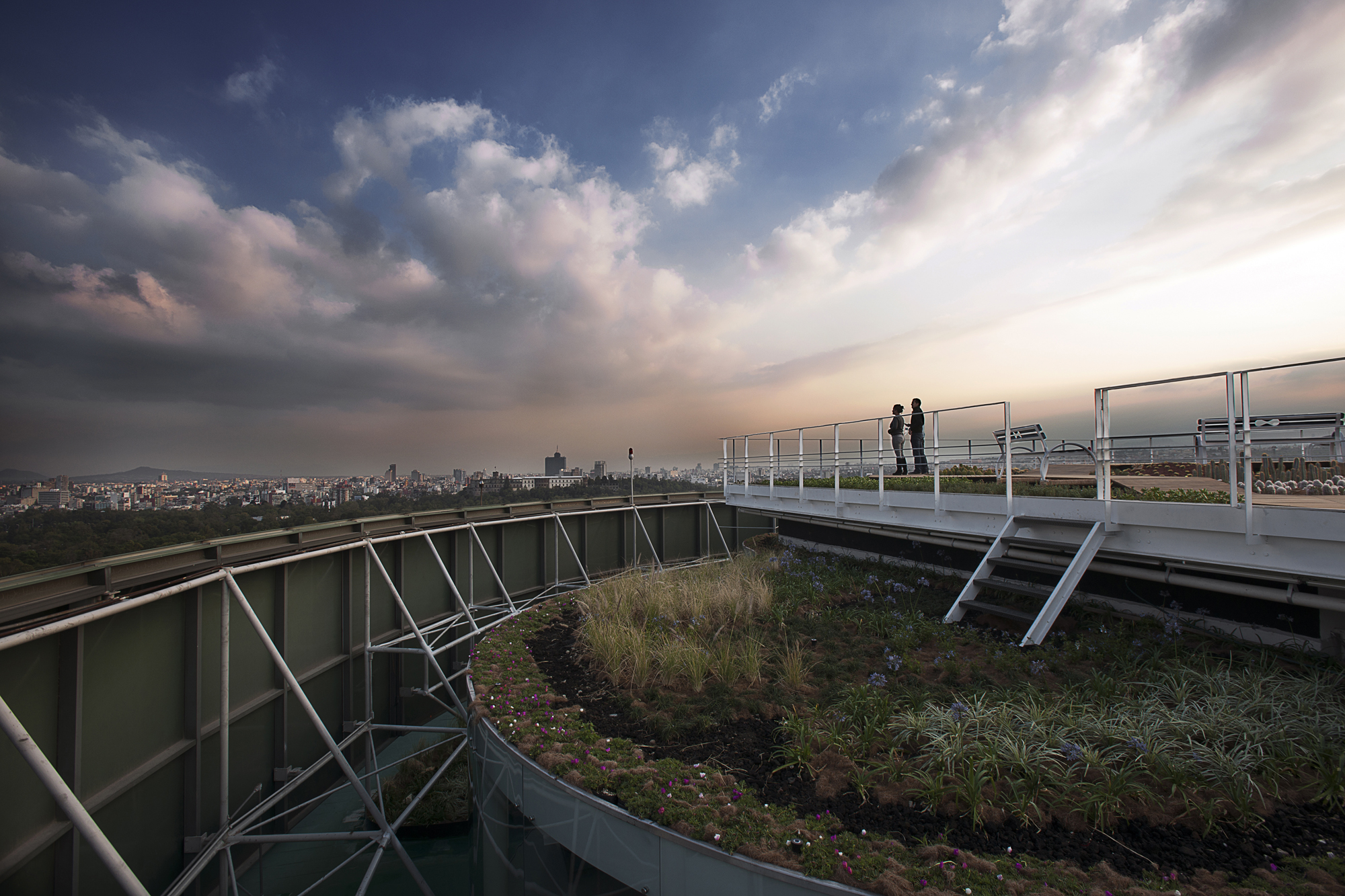
Photo © Jaime Navarro Courtesy of Rojkind Arquitectos
As part of an ongoing collaboration with The Coca-Cola Company, Rojkind Arquitectos with AGENT worked on the design of Foro Ciel, an physical space that will house the activities of the Transformadora Ciel program.

Photo © Jaime Navarro Courtesy of Rojkind Arquitectos
Michel Rojkind (Principal)
Gerardo Salinas (Partner)
Andrea León (Office Manager)
Beatriz Zavala
Sandra Carvajal
Rosalba Rojas (Marketing)
Architectural Project
AGENT: Alberto Villareal, Felipe Castañeda and Isaac Smeke
Structural Engineer
Ing. Jorge Cadena
MEP
Innovative Design
Lighting Design
Sylumis + AGENT
Landscape Consultant
Zona Verde Mx
Builder
Hines Mexico
Renderings
Rojkind Arquitectos
Photography
Jaime Navarro
Foro Ciel emerges as the vivid example of a positive transformation as its main premise. Having an unused space as a starting point (the volume between the roof of the building and the helipad) and transforming it into a productive co-working center surrounded by green areas, the space is not only functional but also revives the community.
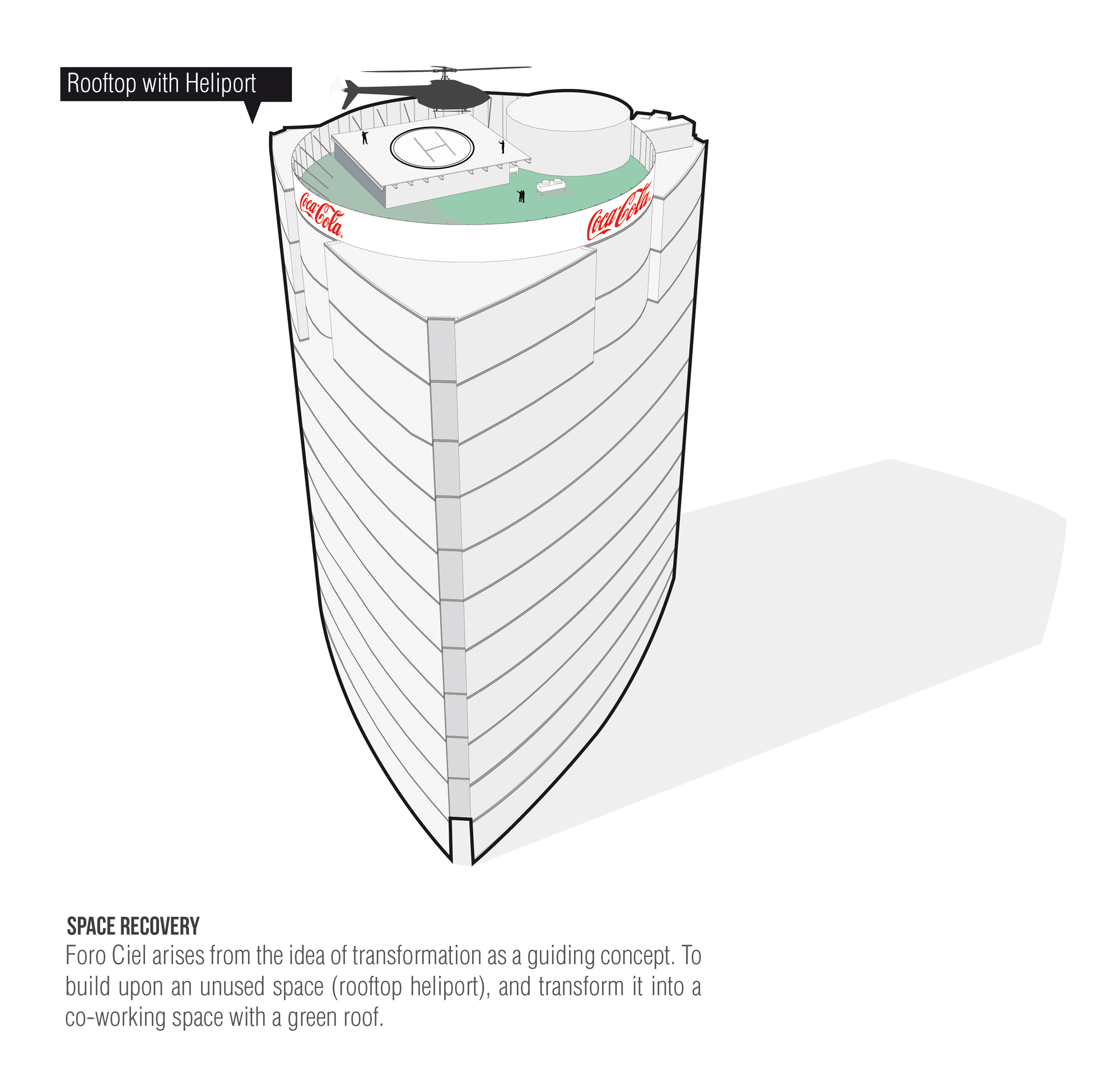
Original condition © Rojkind Arquitectos

Area of opportunity © Rojkind Arquitectos
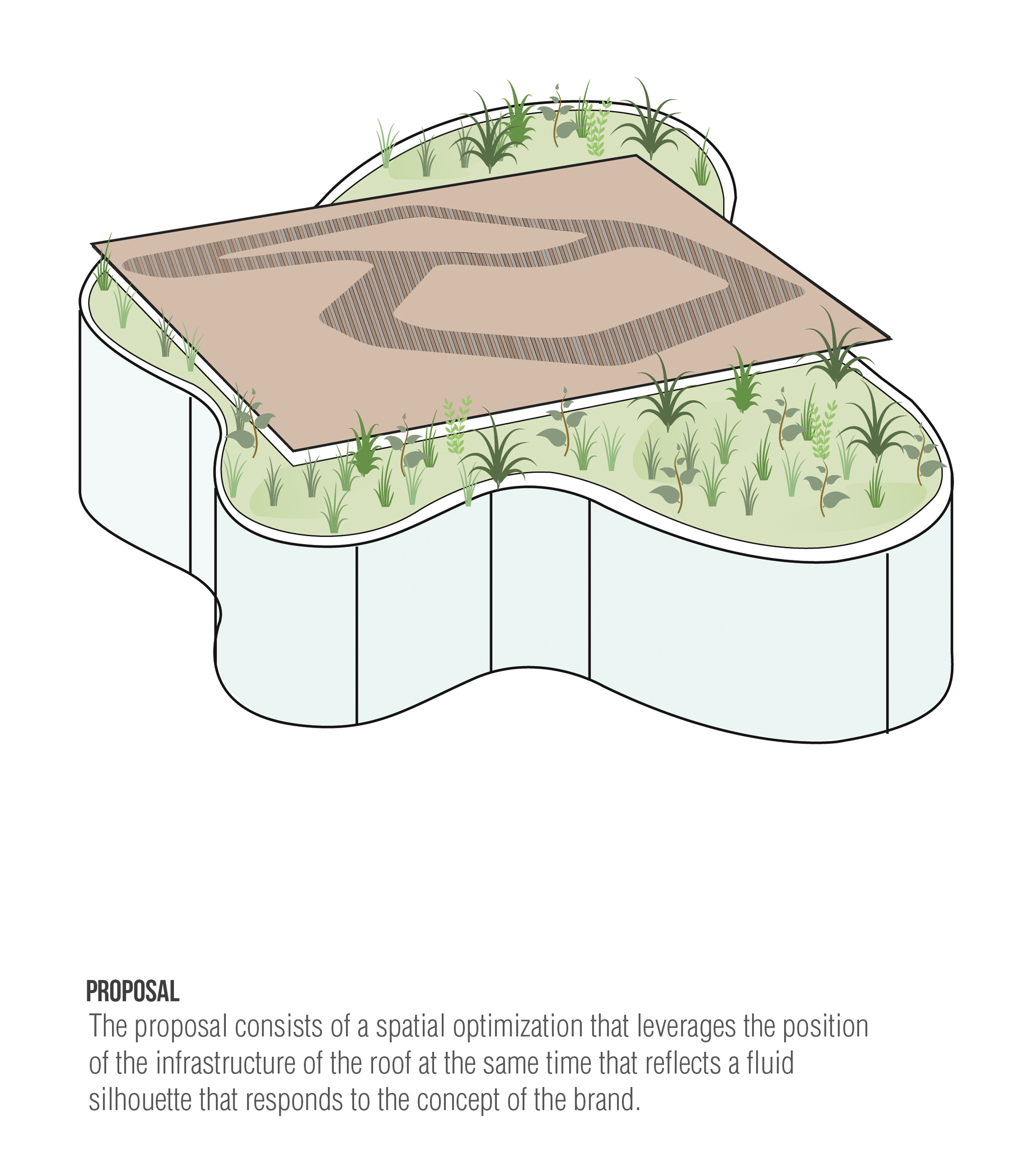
Proposal © Rojkind Arquitectos
The shapes within the space, as well the curved windows are reminiscent of Ciel’s “double drop” logotype and a representation of the dynamic workspace it holds.
As there were several elements already in the space, such as the structure for the helipad, Foro Ciel was designed with the goal to reuse the existing structure as much as possible while creating a new co-working space that included green areas.
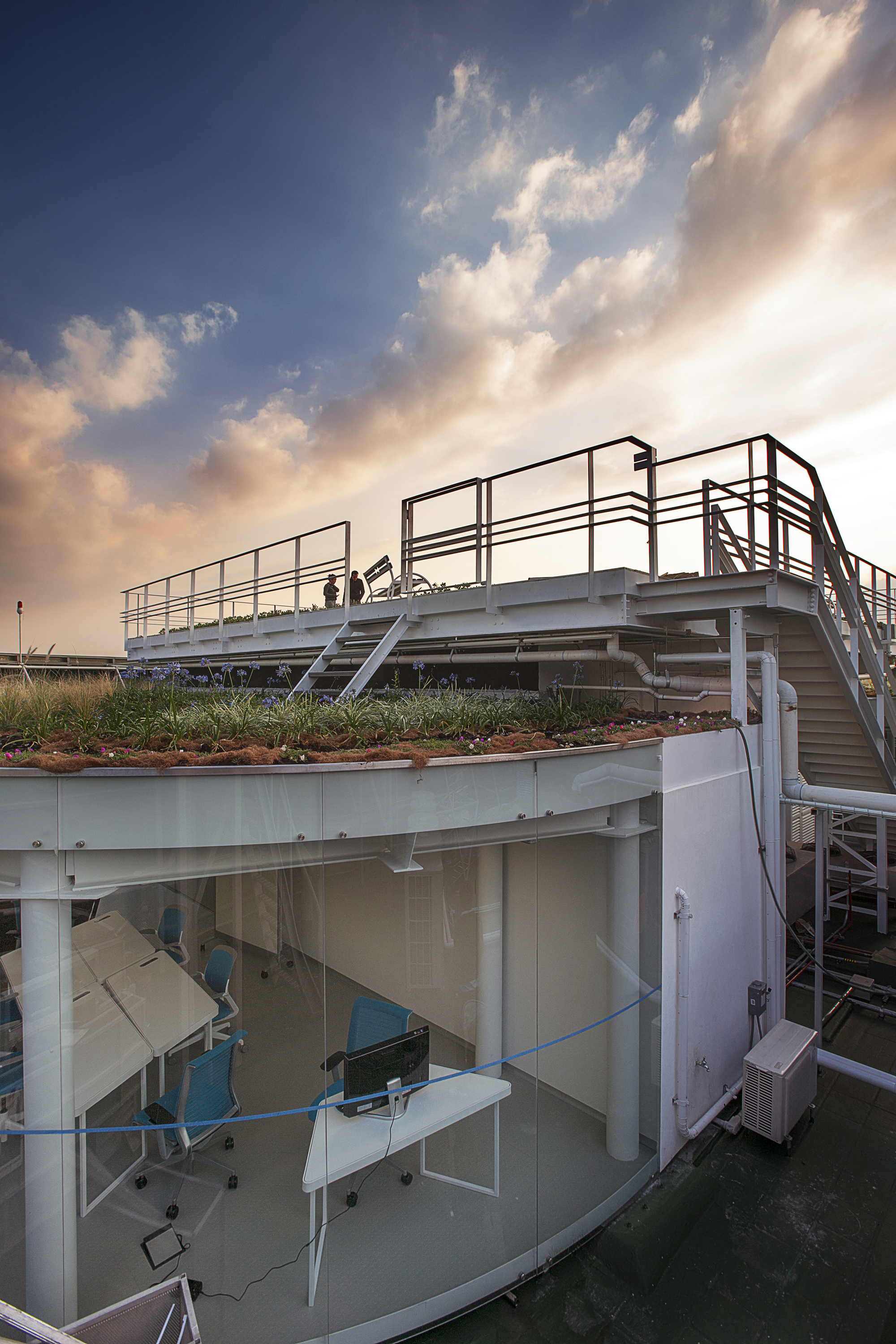
Photo © Jaime Navarro Courtesy of Rojkind Arquitectos
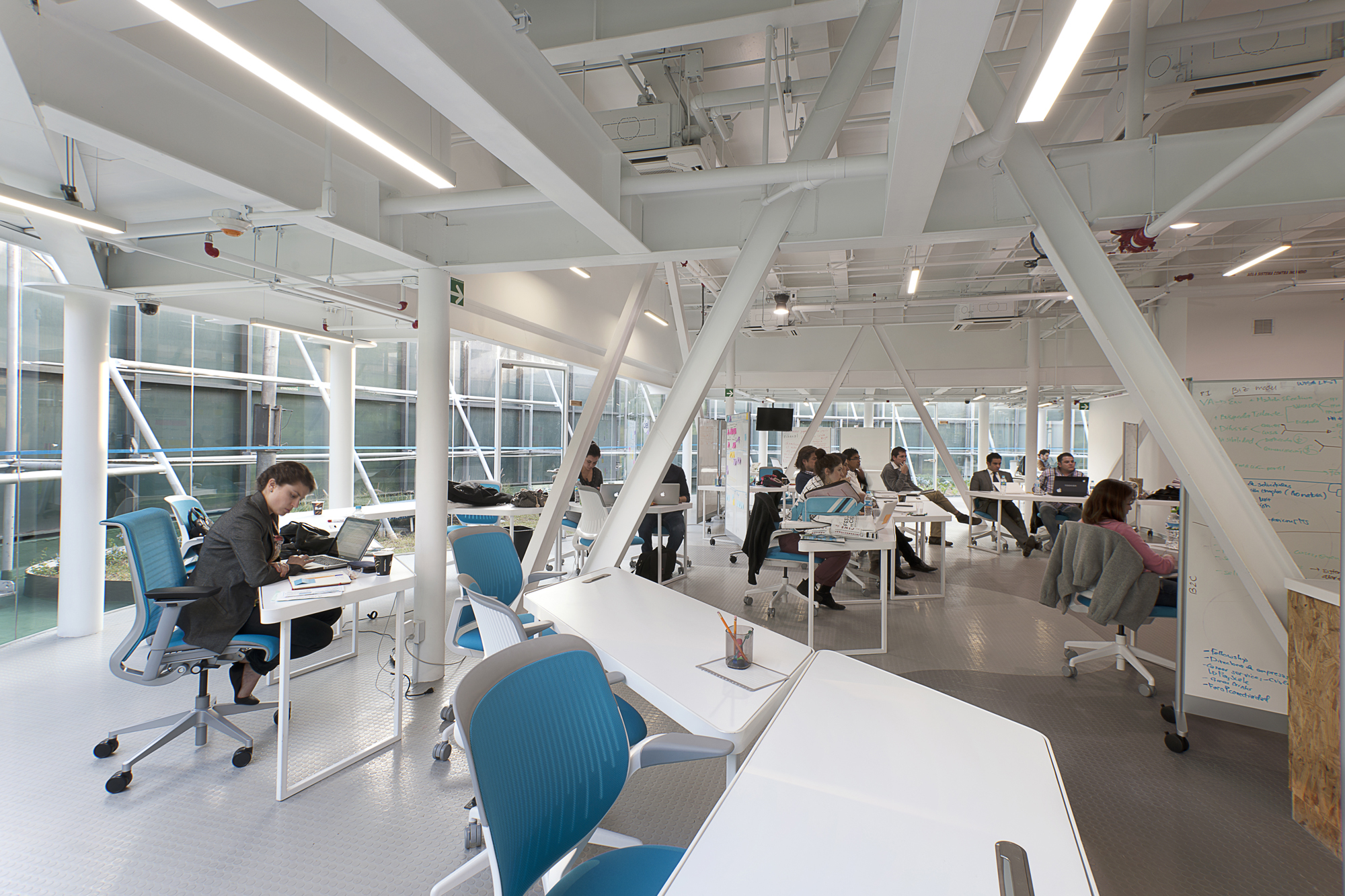
Photo © Jaime Navarro Courtesy of Rojkind Arquitectos
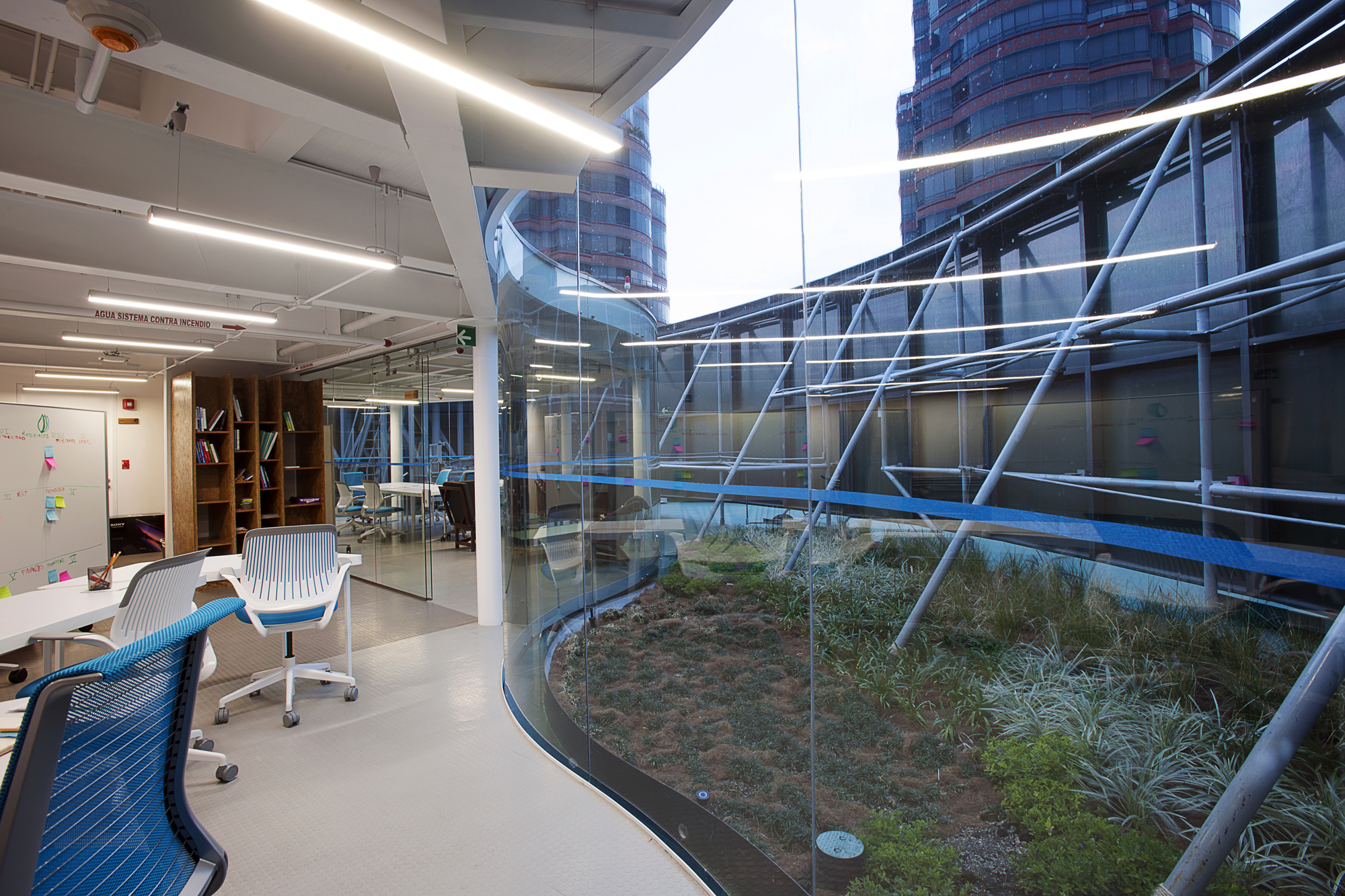
Photo © Jaime Navarro Courtesy of Rojkind Arquitectos
The organic perimeter (“splash” or amoeba), defined by a curved glass façade, establishes a spatial game of entering and exiting the footprint of the helipad above. These organic spaces go hand in hand with the type of dynamic work taking place in the space.
The relationship between interior and exterior was also taken into consideration. Users have access to three green areas located above Foro Ciel, on the rooftop, and on the platform that was formerly the helipad. Thus, the three levels of green space generated create a green “infinity pool” blending with the Chapultepec Forest in the background.

Photo © Jaime Navarro Courtesy of Rojkind Arquitectos
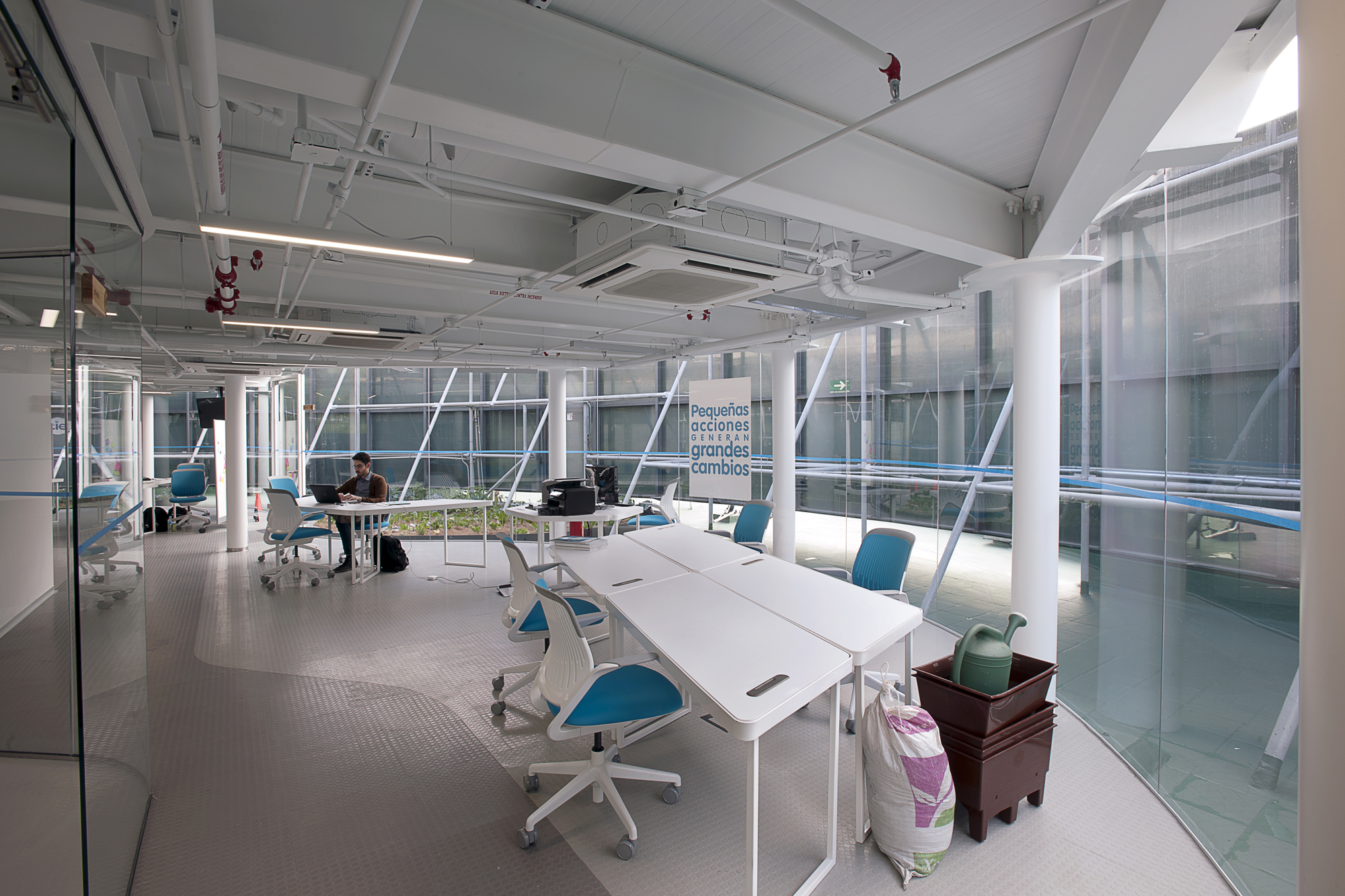
Photo © Jaime Navarro Courtesy of Rojkind Arquitectos
Regarding the architectural program, the interior layout was designed simultaneously with the furniture selection (several customized pieces of furniture were designed) so that the users are able to arrange the furniture depending on their need to work individually or as a group, and to easily reconfigure the space as needed. That way the interior space will be able to fit the needs of its uses in the long term.
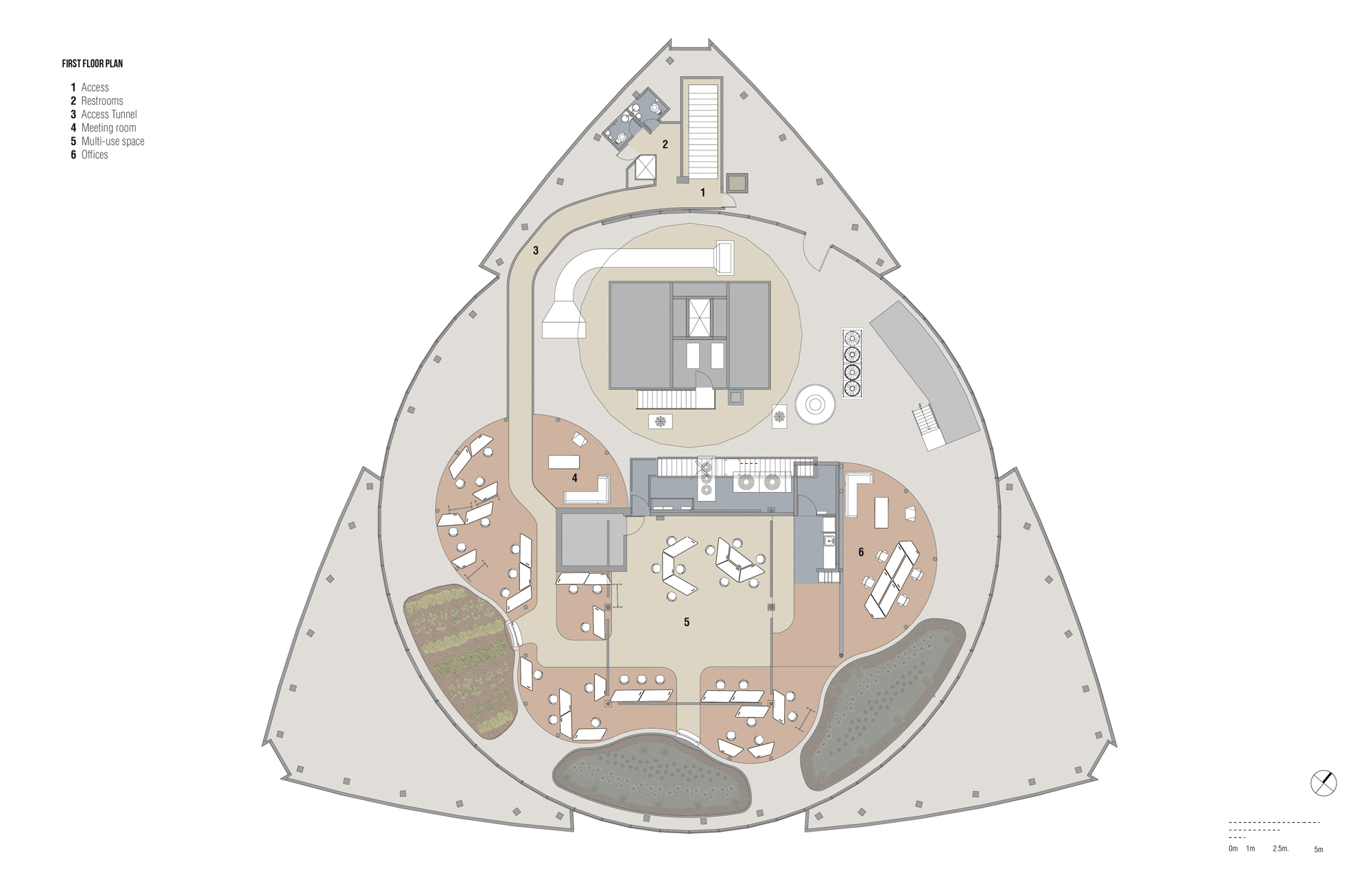
Plan © Rojkind Arquitectos
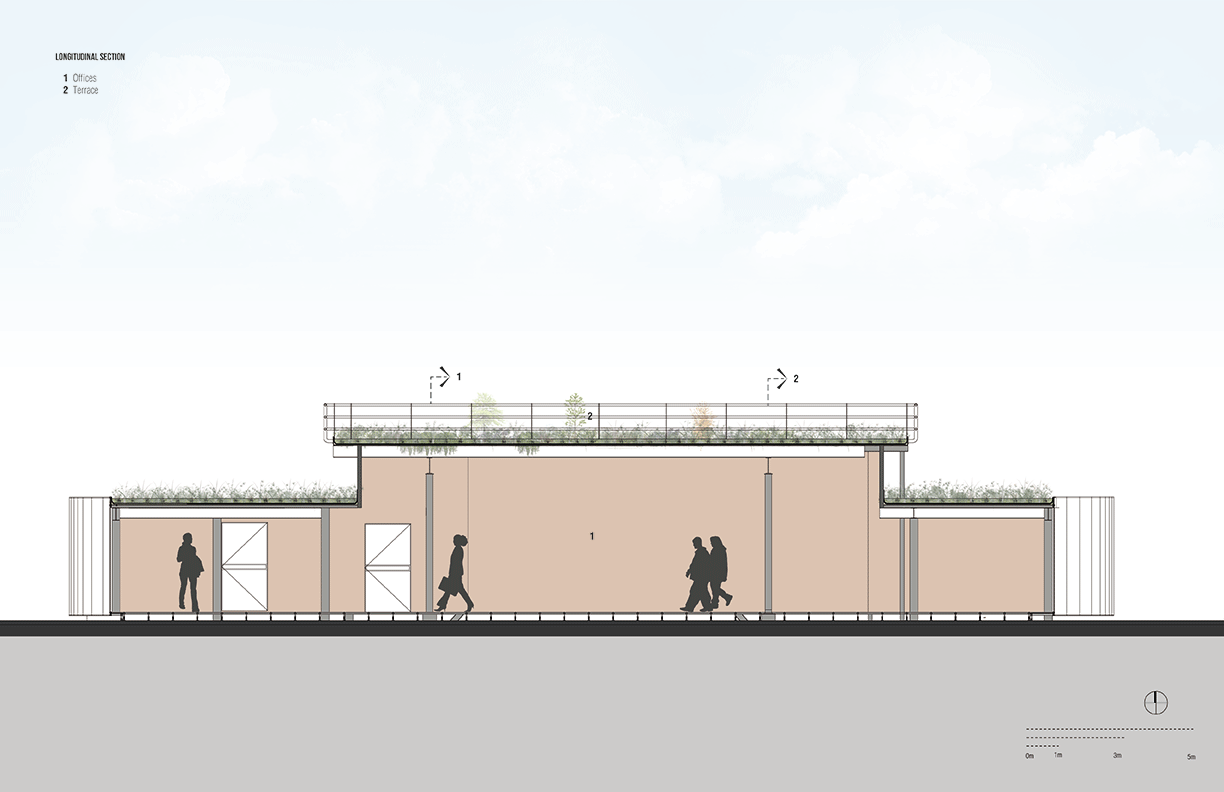
Section © Rojkind Arquitectos
In terms of the environmental impact, we took into account various aspects during the design and construction stages to minimize environmental damage and even have a positive impact. For example, the “industrial” aesthetic is intended to leave many elements (facilities, pipelines, etc.) without finishes to avoid using extra materials.
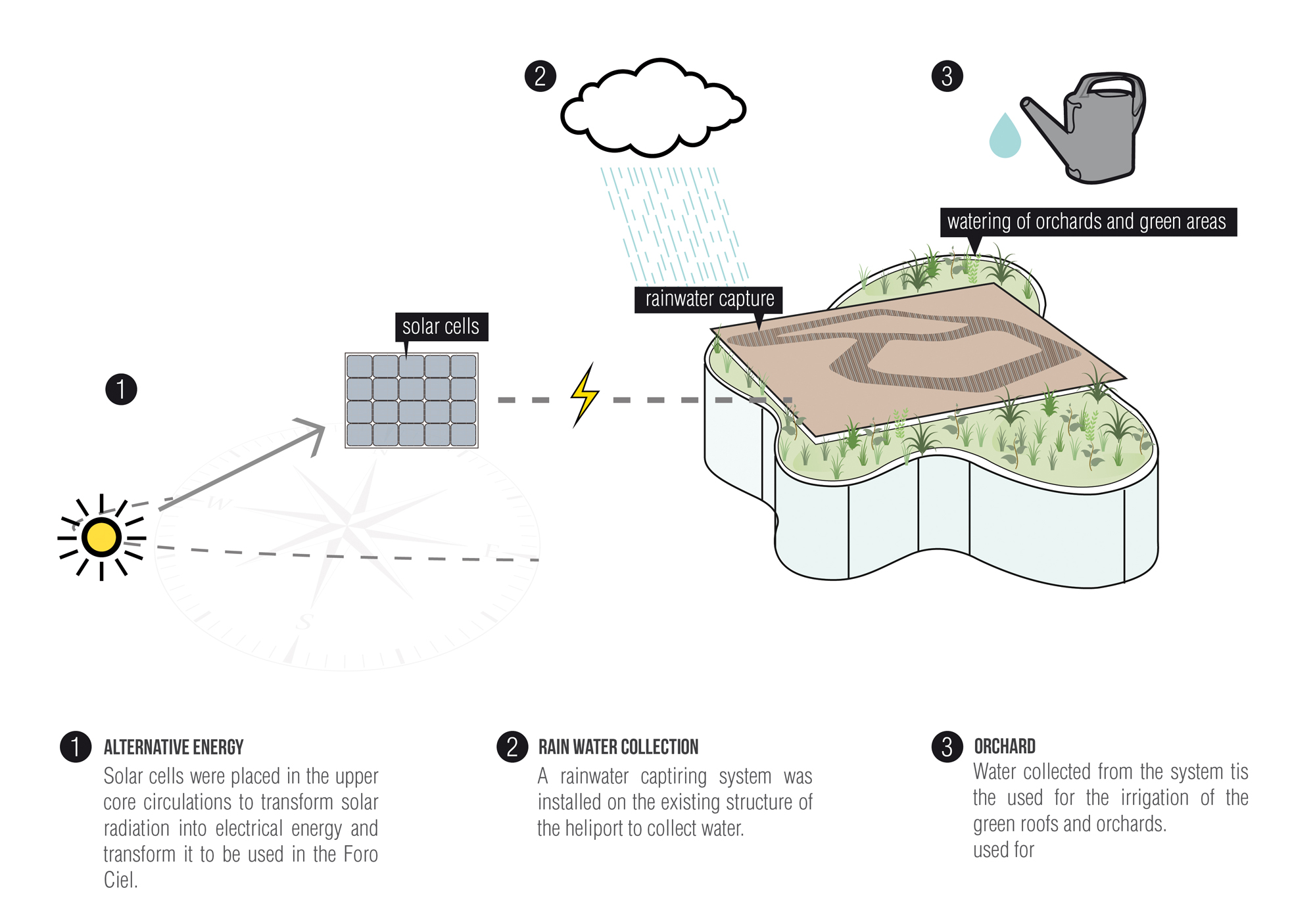
Environmental approach © Rojkind Arquitectos
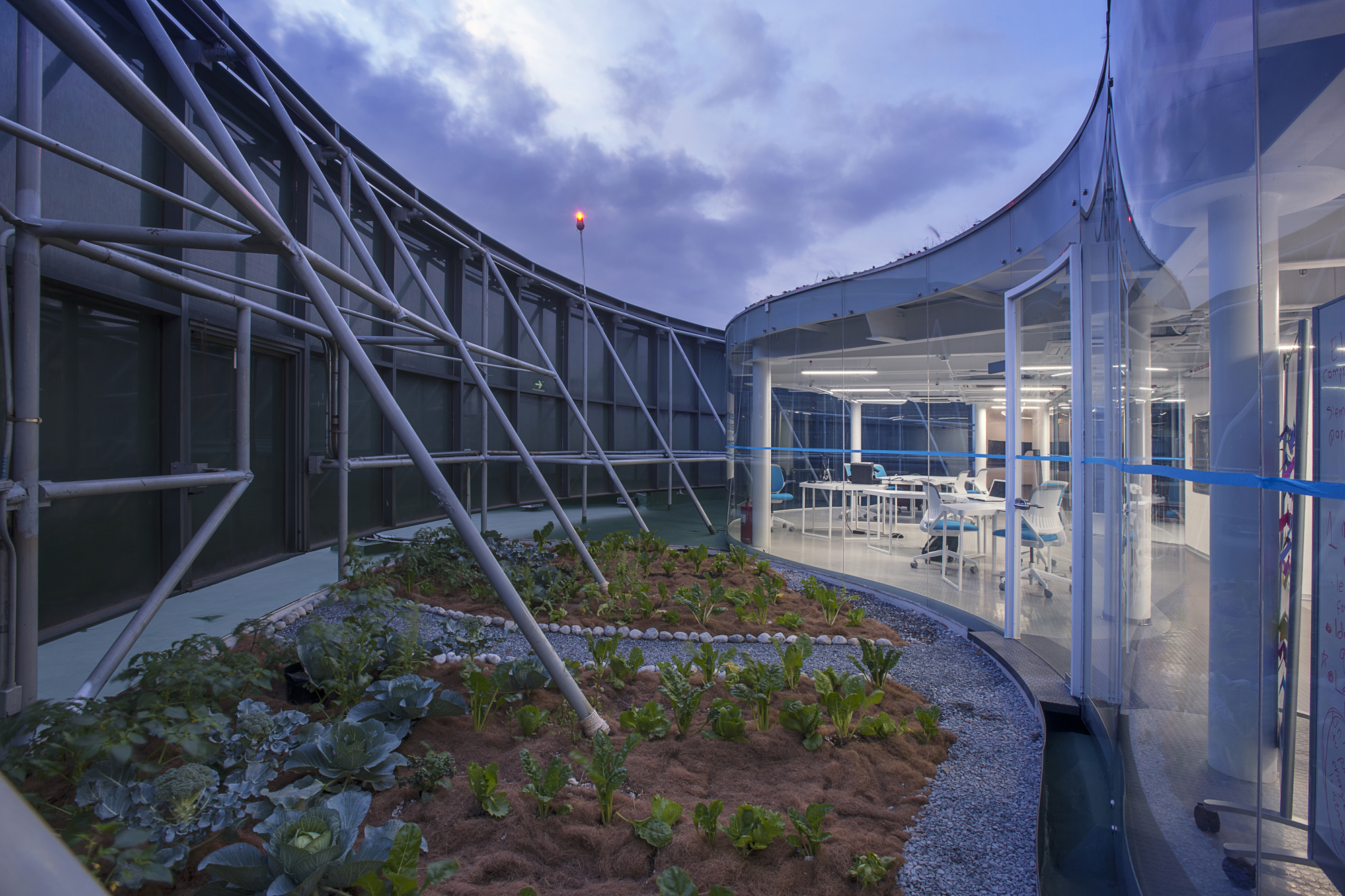
Photo © Jaime Navarro Courtesy of Rojkind Arquitectos
Additionally, existing elements of the structure of the helipad and other areas of the roof were turned into stairs, new structure, and guardrails. Clean technologies were incorporated such as solar panels that fulfill most of the electrical requirements of the space and a rainwater collection system to water the green areas. An evident demonstration of the positive impact in the environment is the addition of the green roof that on top of providing oxygen, it turns an unused space into an active new area.
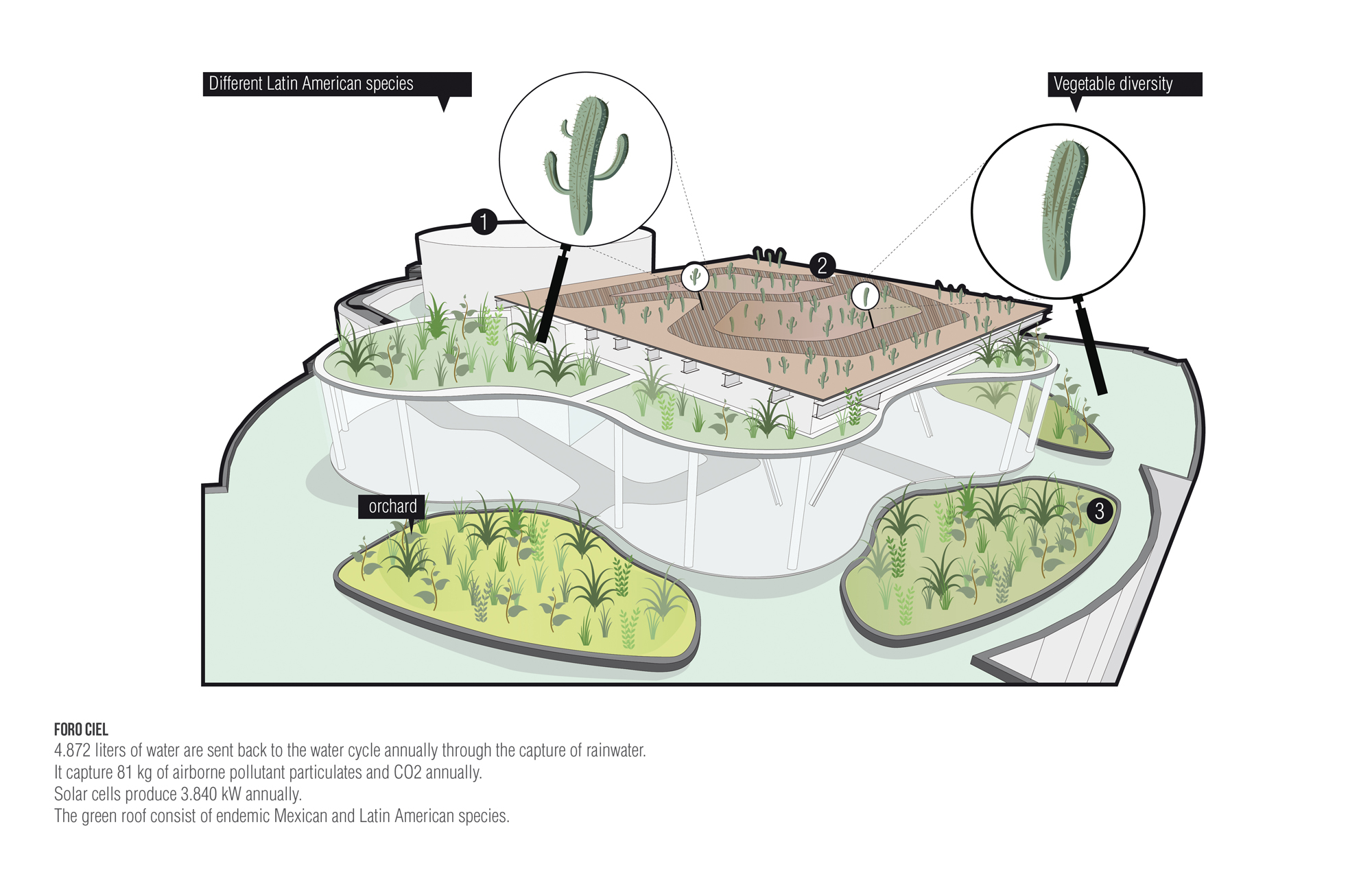
Green spaces © Rojkind Arquitectos
Other design features in terms of positive environmental impact are:
– Natural and LED-based lighting
– Water-based paint for structural elements
– Electrostatic paint for the furniture
– Locally produced furniture
– Green roof including an orchard with rainwater collection system
– Use of recycled materials and reutilization of existing structural elements
– Use of low impact materials that contribute to LEED certification
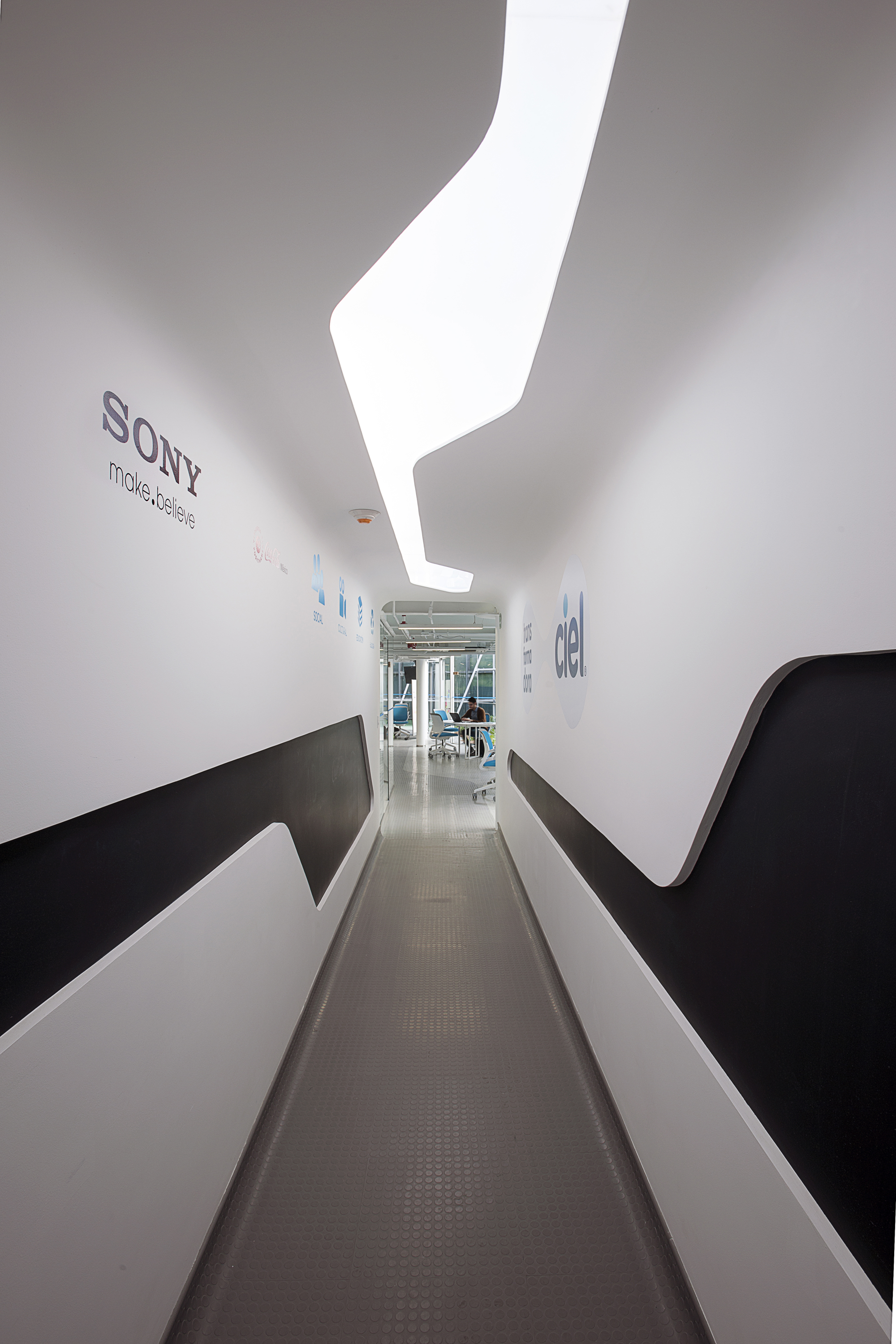
Photo © Jaime Navarro Courtesy of Rojkind Arquitectos
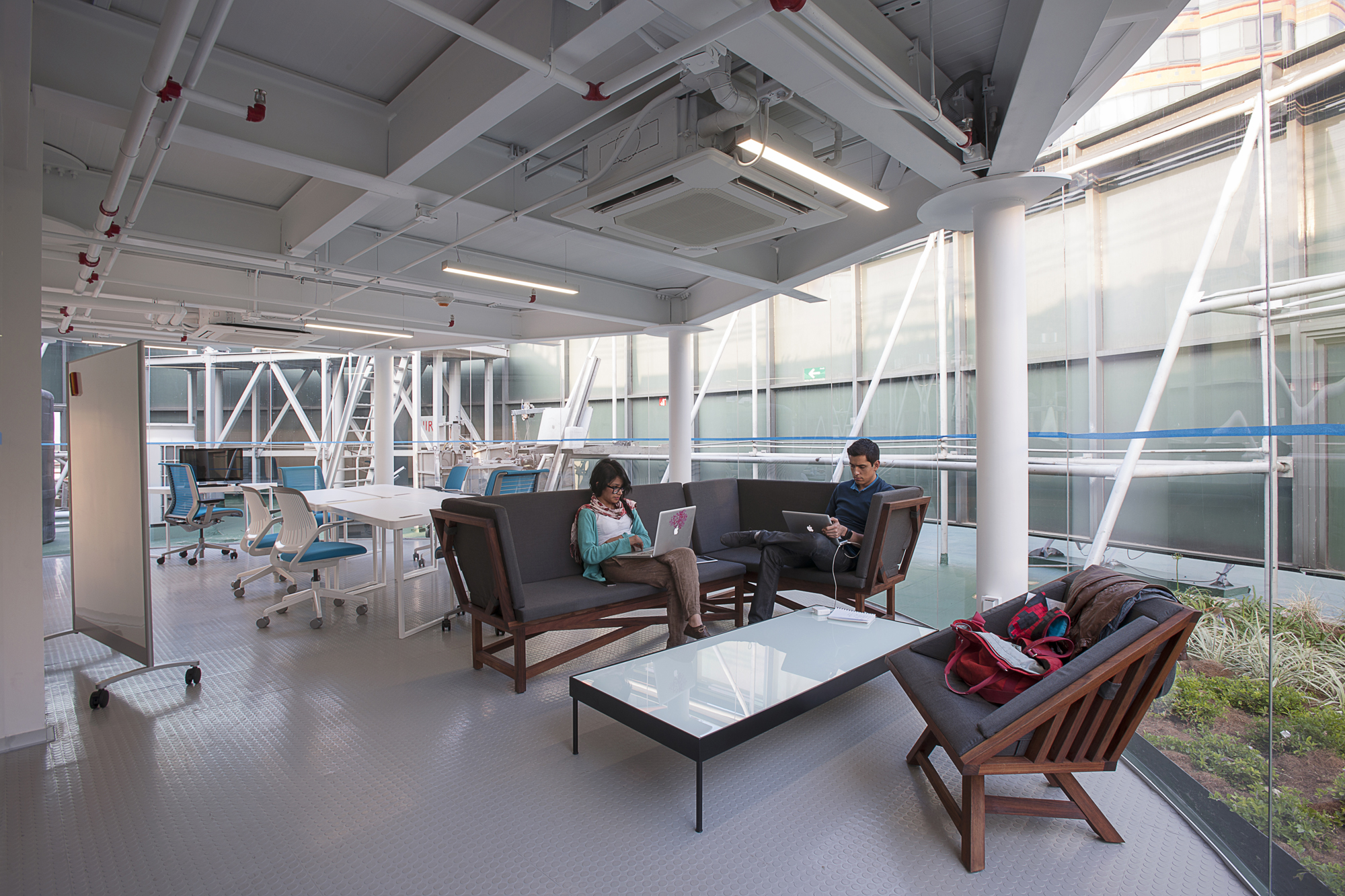
Photo © Jaime Navarro Courtesy of Rojkind Arquitectos